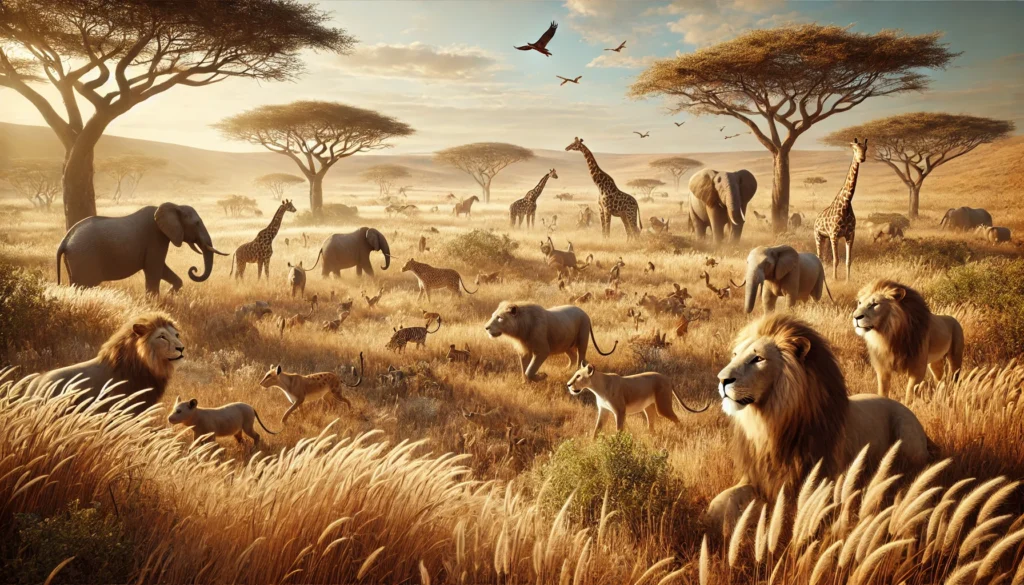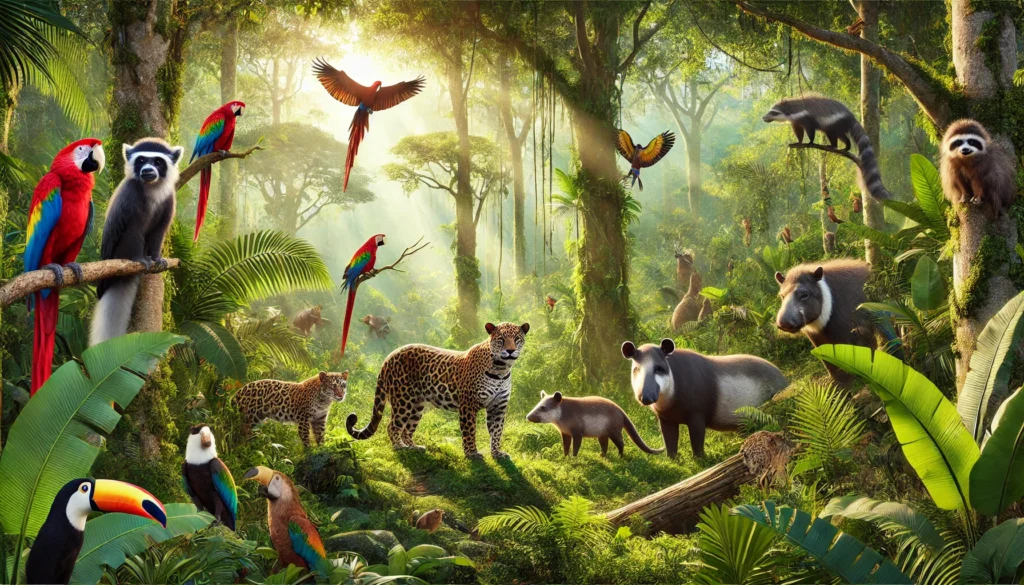Concern about the extinction of wild animals is growing more and more, and for good reason. In a world where the diversity of life is constantly threatened by human activities, the preservation of at-risk species has become a global priority. Let's explore not only what these animals are, but also how each of us can contribute to their survival.
Imagine a world without the majesty of the tiger, without the gracefulness of the snow leopard, or without the song of the golden lion tamarin. Unfortunately, this could become a reality if we don't act quickly to protect these and many other endangered wild animals.
Each species plays a crucial role in its ecosystems, and their loss can have devastating consequences for the environmental balance. Therefore, the responsibility to preserve them does not just fall on governments and organizations, but on each one of us. But how can we do this?
The Importance of Wild Animal Conservation
Biodiversity is essential for the health of the planet. Wild animals perform vital ecological functions such as pollination, seed dispersal, pest control and maintaining fertile soil. The extinction of a single species can trigger a cascade of negative effects across its habitat and beyond.
Furthermore, many of these animals have significant cultural and economic value. For example, ecotourism, which depends on wildlife viewing, generates billions of dollars globally and sustains entire communities. The loss of these species, therefore, is not only an ecological tragedy, but also an economic disaster.

Endangered Species: Notable Cases
Tiger (Panthera tigris)
The tiger, one of the most iconic creatures on the planet, is dangerously close to extinction. With less than 4,000 individuals remaining in the wild, their survival depends on conserving their habitats and fighting illegal hunting.
Golden Lion Tamarin (Leontopithecus rosalia)
Endemic to the tropical forests of Brazil, the golden lion tamarin is a jewel of South American biodiversity. Reintroduction and reforestation projects have been crucial to increasing their populations, but habitat destruction is still a major threat.
Javan Rhinoceros (Rhinoceros Sondaicus)
With fewer than 75 individuals remaining, the Javan rhino is one of the rarest mammals in the world. Conservation efforts include strict protection of their habitat and prevention of poaching.
Snow Leopard (Panthera uncia)
Inhabiting the mountains of Central Asia, the snow leopard faces poaching and habitat loss due to global warming. With less than 10,000 individuals left in the wild, the conservation of this species is crucial for the maintenance of high-altitude ecosystems.
African Elephant (Loxodonta africana)
African elephants are constantly threatened by illegal hunting and habitat destruction. Conservation efforts include creating ecological corridors and fighting the illegal ivory trade.
Causes of Extinction
Species extinction is not a new phenomenon, but the alarming rate at which it is occurring today is unprecedented. The main causes include:
Habitat Loss
Deforestation, urbanization and intensive agriculture are destroying animals' natural homes. Without suitable habitat, many species cannot survive.
Hunting and Illegal Trade
Poaching and animal trafficking are largely responsible for the decline in the populations of several species. Animals like elephants and rhinos are hunted for their tusks and horns respectively.
Climate changes
Global warming alters natural habitats and migration patterns, directly affecting animal survival. Corals, for example, are dying en masse due to rising ocean temperatures.
Pollution
Chemicals, plastics and other pollutants are contaminating natural habitats, causing illness and death in many species.

What Can We Do to Help?
Support and Participate in Conservation Projects
Organizations like WWF, Greenpeace and several local NGOs are on the front lines of the battle to save endangered species. Donating to these organizations or volunteering for their projects can make a big difference.
Education and Awareness
Education is one of the most powerful tools in conservation. Informing yourself and educating others about the importance of biodiversity and the dangers of extinction is essential. Awareness programs in schools and communities can help create a more aware and responsible generation.
Sustainable Consumption Practices
Choosing sustainable and certified products, avoiding the use of single-use plastics and supporting companies with ecological practices are effective ways to reduce environmental impact. This includes consuming certified wood products, preferring organic foods and supporting brands that invest in fair trade practices.
Government Policies and Collective Actions
Supporting government policies aimed at environmental protection is crucial. Petitions, peaceful protests and political engagement can pressure governments to adopt stricter conservation measures.
Responsible Tourism
Ecotourism can be a powerful tool for conservation if done responsibly. Choosing tour operators that respect the environment and contribute to local conservation can help protect habitats and species.
Reducing Meat Consumption
Livestock farming is one of the biggest contributors to habitat destruction and greenhouse gas emissions. Reducing meat consumption or opting for sustainable alternatives can significantly reduce the environmental impact.
Support Agroecology
Agroecology promotes sustainable agricultural practices that conserve biodiversity and reduce dependence on chemicals. Supporting farmers who adopt these practices is a way of contributing to the conservation of natural habitats.
Examples of Conservation Success
While the challenges are immense, there are inspiring success stories that remind us that change is possible. The case of the giant panda is an excellent example. Thanks to intense conservation efforts and captive breeding programs, pandas have been reclassified from “threatened” to “vulnerable.” This success is due to global collaboration and continued commitment to preserving its natural habitat.
Another notable example is the rise in populations of humpback whales, which were hunted almost to extinction in the 20th century. The creation of marine protected areas and bans on commercial whaling have allowed these magnificent creatures to recover their populations.
The Conservation of Wild Animals in Brazil
Brazil, with its vast biodiversity, faces unique conservation challenges. Projects such as the reintroduction of the golden lion tamarin and the preservation of the giant anteater are essential for the protection of endemic species. Furthermore, creating nature reserves and promoting sustainable agricultural practices are essential steps in preserving critical habitats.
The Amazon, for example, is one of the richest ecosystems in biodiversity in the world, but it is constantly threatened by deforestation. Conservation efforts include satellite monitoring, enforcement against illegal deforestation and the promotion of agroforestry systems that combine agricultural production with conservation.
How to Engage in Conservation
Volunteering
Many organizations offer opportunities to volunteer on conservation projects. This can range from fieldwork in protected areas to awareness campaigns in urban areas.
Donations
Financially supporting conservation organizations is a direct way to contribute. These donations are used to fund research, species reintroduction programs, and habitat protection efforts.
Participation in Animal Adoption Programs
Some NGOs offer symbolic adoption programs, where you can “adopt” an animal and contribute to its protection. In return, you receive updates on the progress of conservation efforts.
Engagement in Public Policies
Pressuring politicians and supporting environmental legislation is crucial. Participating in public consultations, signing petitions and voting for candidates committed to conservation are effective ways to influence public policy.
Conclusion
The extinction of wild animals is an urgent issue that demands our immediate attention. Each species we lose is an irreparable loss for the planet's biodiversity and for humanity. However, there is hope. With concerted efforts, education, effective policies and individual actions, we can make a difference. Protecting tigers, golden lion tamarins, rhinos and many other species at risk is a shared responsibility. After all, wildlife conservation is ultimately the conservation of our own future.
